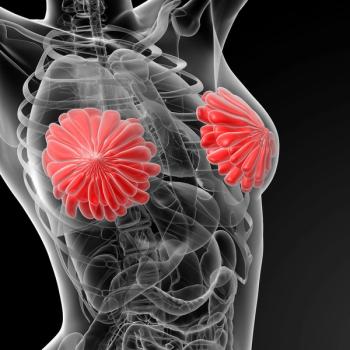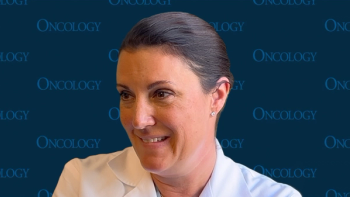
Oncology NEWS International
- Oncology NEWS International Vol 8 No 10
- Volume 8
- Issue 10
Retinoid Analogue in Tamoxifen-Resistant Breast Cancer
SAN DIEGO-In preclinical studies, Ligand Pharmaceuticals’ Targretin (LGD1069, also known as bexarotene) plus tamoxifen (Nolvadex) produced a response rate of 94% in tamoxifen-resistant breast tumors, compared with 33% for long-term tamoxifen therapy alone, said Ligand scientist Eric Bischoff.
SAN DIEGOIn preclinical studies, Ligand Pharmaceuticals Targretin (LGD1069, also known as bexarotene) plus tamoxifen (Nolvadex) produced a response rate of 94% in tamoxifen-resistant breast tumors, compared with 33% for long-term tamoxifen therapy alone, said Ligand scientist Eric Bischoff.
Targretin is a synthetic retinoid analogue that selectively activates a subclass of retinoid receptorsretinoid X receptorsthat play an important role in the control of cellular function. This new class of agents, known as rexinoids, offers a novel approach to the treatment of breast tumors that escape sensitivity to antihormonal therapies, such as tamoxifen, Mr. Bischoff said at the 90th annual meeting of the American Association for Cancer Research (Philadelphia).
Mr. Bischoff and his colleagues William W. Lamph, PhD, and Richard A. Heyman, PhD, designed a novel tamoxifen-resistant animal model of breast cancer for use in the study.
Ligand has launched an open-label phase II clinical trial of Targretin in advanced breast cancer patients, with interim results expected this year. The trial is assessing the efficacy, safety, and tolerability of two dose levels of Targretin capsules (200 and 500 mg/m²/d) in up to 180 women with metastatic breast cancer. The study is being conducted at approximately 30 centers throughout the United States.
Researchers plan to include up to 60 patients in each of three groups based on prior therapy: patients for whom standard chemotherapy is no longer effective, patients for whom standard hormonal therapy is no longer effective, and patients currently being treated with tamoxifen whose disease has progressed.
Patients in the tamoxifen-treated group will remain on tamoxifen, and Targretin will be added to their therapy regimen. Each patients tumor status will be evaluated every 8 weeks for the first 6 months of the study and every 12 weeks thereafter, the company said.
Articles in this issue
about 26 years ago
Henderson Offers ‘Take-Home Messages’ From Endocrine Studiesabout 26 years ago
Sustained-Release Cytarabine for Lymphomatous Meningitisabout 26 years ago
Scintimammography Detects Tumors in Dense Breast Tissueabout 26 years ago
Autologous Vaccine as Adjuvant Therapy for Melanomaabout 26 years ago
Breast Cancer Screening in Women 40 to 49about 26 years ago
Limited Surgery Better in Colon Cancer With Diffuse Liver Metsabout 26 years ago
Risk Factors for Local Recurrence After Breast-Conserving Therapyabout 26 years ago
New Brain Imaging Technique Cuts MR Scan Time in Halfabout 26 years ago
NCI Is Testing Thalidomide to Prevent Colorectal Cancer Recurrenceabout 26 years ago
Penn Cancer Center Sponsors Exhibit of Cancer Patients’ ArtNewsletter
Stay up to date on recent advances in the multidisciplinary approach to cancer.


















































































